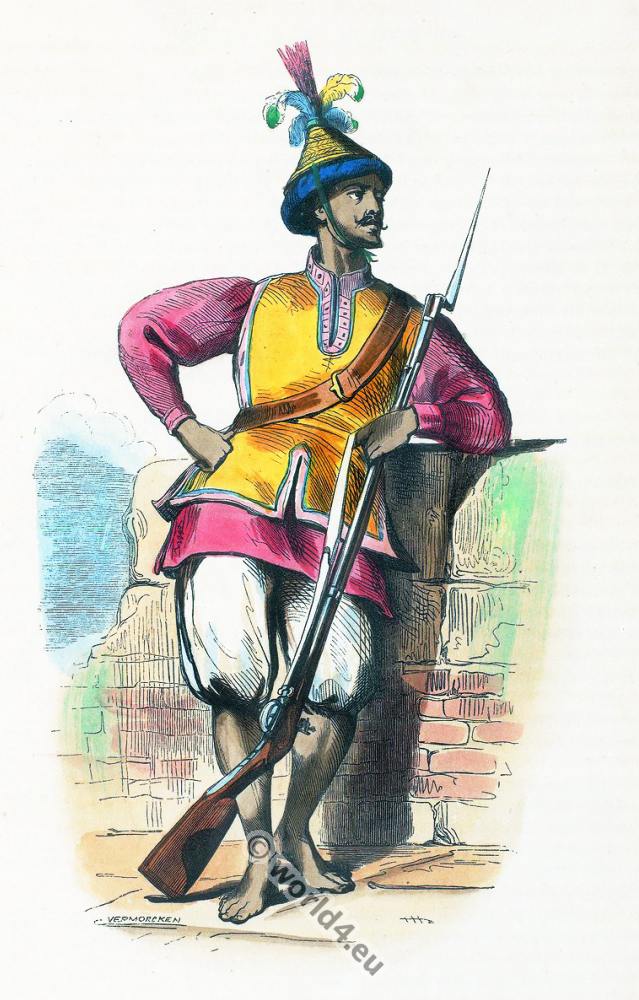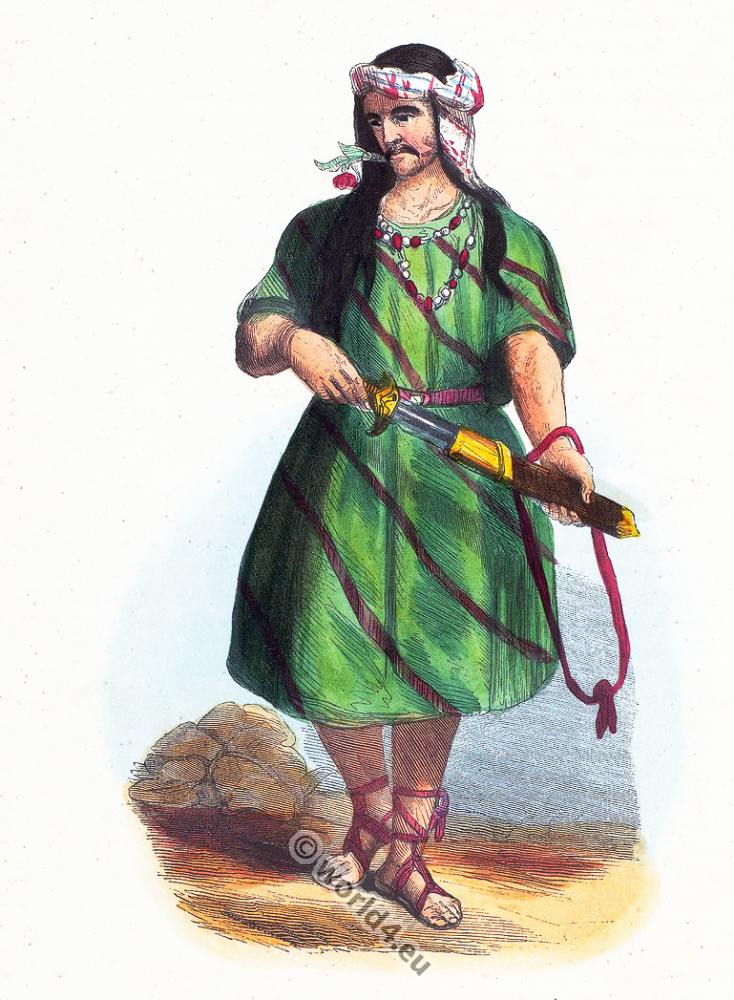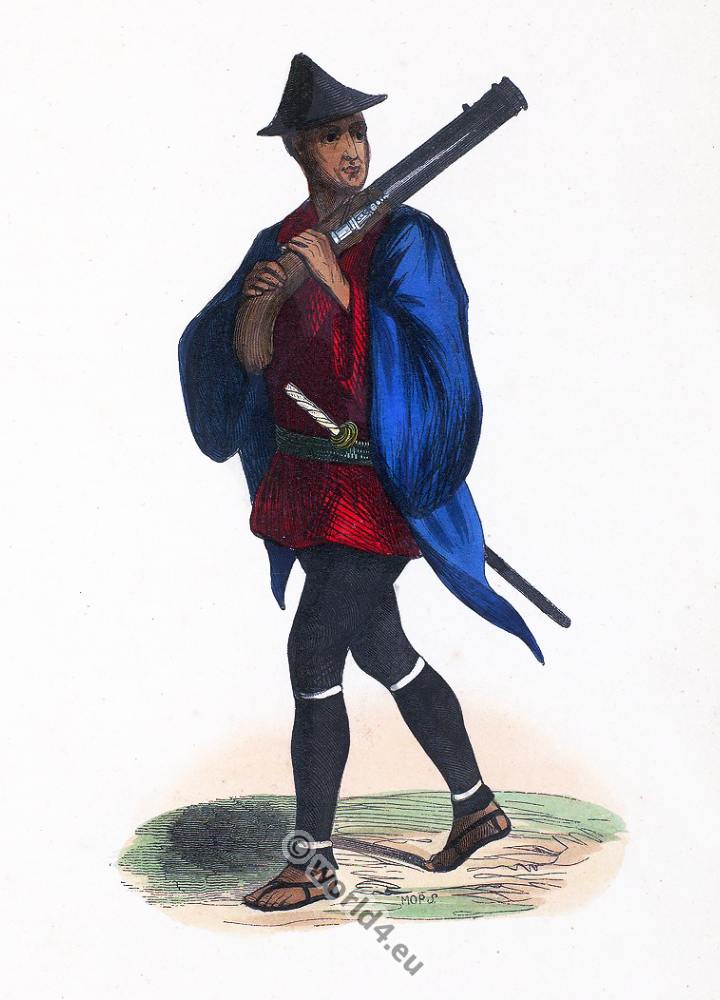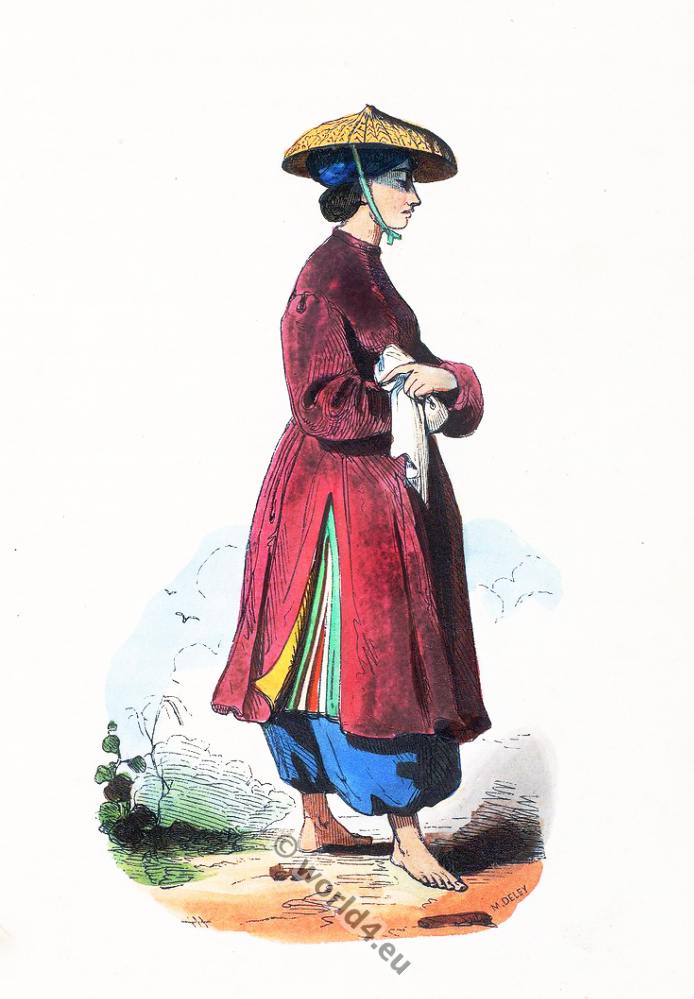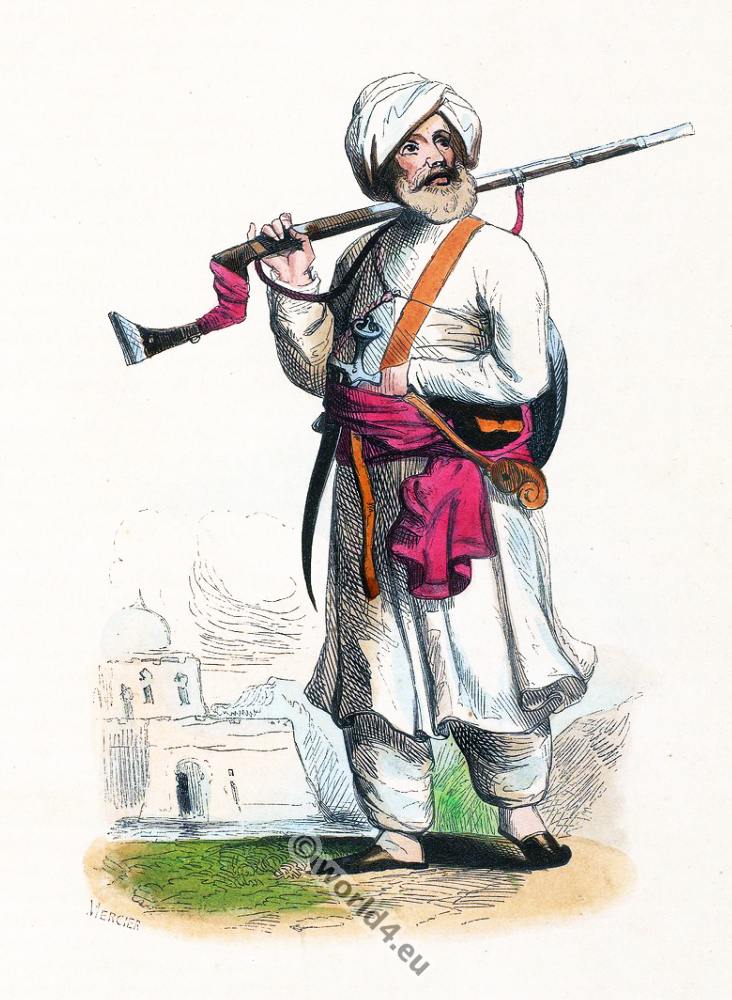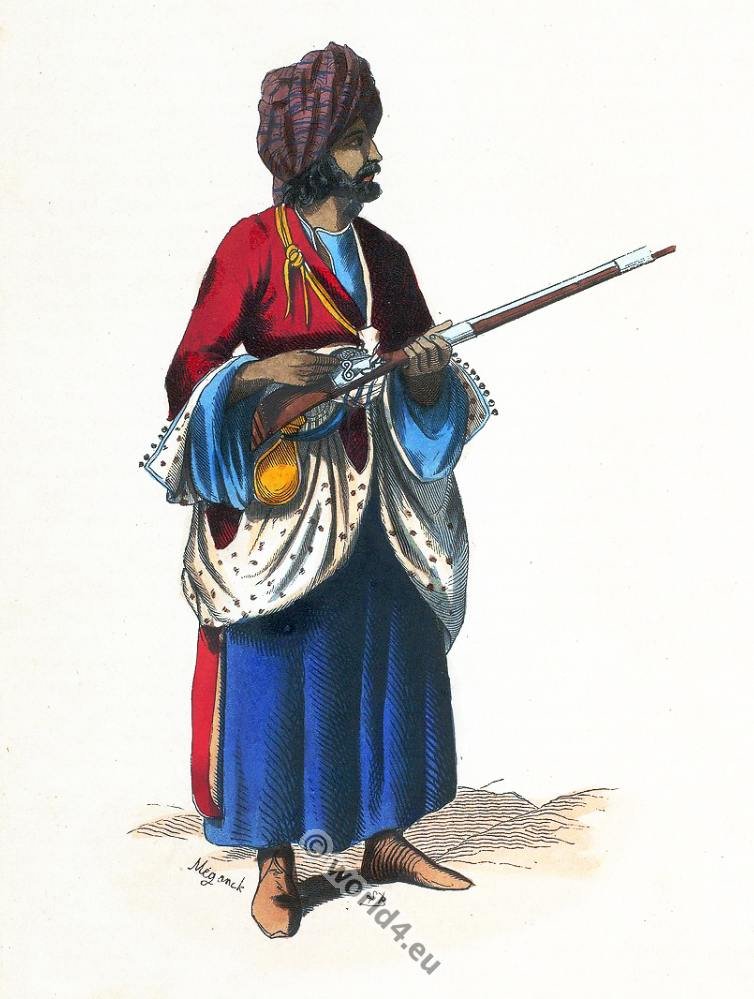Vietnam Soldier costume 1843.
Soldat Cohinchinois.
Cochinchina, French Cochinchine, Vietnamese Nam Kỳ (from Chinese 南圻, “southern border”) is an old name for southern Vietnam and parts of eastern Cambodia, between 1863 and 1954 especially for the French colony of that name. The term was introduced by the Portuguese Tomé Pires in 1515 as Cauchy Chyna. Pires, who was staying in Malacca at the time, adopted the term from Malay, where it described a land between Champa and China.
The Malay term in turn came from the Chinese Jiaozhi (Chinese 交趾, Pinyin Jiāozhǐ, Vietnamese: Giao Chỉ), which referred to all of Vietnam including the lower reaches and delta of the Red River. China was added to distinguish it from the Indian Cochin. However, the reversed form Chinacochim appears on Genoese maps as early as 1502/3, before Europeans sailed the South China Sea and thus Malacca.
Later, in the 16th century, it was used to refer to the separate Nguyễn state around the city of Huế, which became general European usage in 1679, with the establishment of the Apostolic Vicariate of Cochinchina. Thus, from the 17th century onward, a distinction was made between Tongking in the north and Cochinchina in the south. The more southern part around Gia Định (united with Saigon to form Ho Chi Minh City in 1979) and Đồng Nai was then called Lower Cochinchina only in the late 18th century.
In 1862, the French annexed Cochinchina as a colonial territory. The center and north became French protectorate territories as Annam and Tongking under the nominal rule of the Emperor of Huế.
Since the end of French colonial rule over Indochina in 1954, the name Cochinchina has been used less and less frequently and is now out of use. The current name for the southern part of Vietnam is Nam Bộ.
Source: Asian costumes by Auguste Wahlen. Manners, customs and costumes of all peoples of the world.
Related
Discover more from World4 Costume Culture History
Subscribe to get the latest posts sent to your email.

